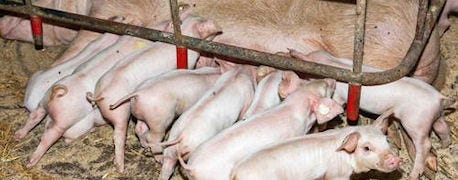January 30, 2014

It's a common question: "Do you want the good news first, or the bad news first?" In this case, it's about pork production in 2014. There's good news on the international demand front, but not so good news on the spread of Porcine Epidemic virus.
Pork specialists discussed both during the VIV International Pork Production Summit PEDv roundtable discussion held during the 2014 International Production & Processing Expo in Atlanta, Ga., this week.

Pork specialists discuss the highs and lows of pork current pork production
In his presentation on the Future of the U.S. Pork Sector in a Global Perspective, James Kenwood, managing director of Rabobank International, observed that pork is the leading globally consumed meat protein, with chicken catching up and beef fairly stable.
China is an important part of that calculus, Kenwood said. It is the largest single protein-consuming market, and pork represents nearly 75% of all protein consumed. These numbers could add up to good news for the United States, which has already benefitted from increased global pork demand, particularly if China follows the model of Japan.
"The outlook for the pork sector is based on understanding the value chain," Kenwood said. Although early predictions call for 2014 to be a year of record profitability, anything from devaluation of the yen -- which makes U.S.-produced pork more expensive -- to the spread of PEDv could affect that forecast.
From a Chinese perspective, Ma Chuang, vice secretary general, Chinese Association of Animal Science and Veterinary Medicine and partner, Boyar Communication Co., detailed some of the challenges and opportunities ahead.
Chuang shared that beef and mutton prices in China have soared, making pork a more affordable option for consumers who crave more protein in their diets. If beef production cannot meet this demand, then other sources will have an opening, including pork and poultry.
Demand for poultry has also risen, although it was hit by the outbreak of H7N9 bird flu last year. Importation of pork and edible offal is also expected to grow.
PEDv dents production
Despite the welcome news about demand for pork, piglets in the U.S. are coming down with Porcine Epidemic Diarrhea virus across several top pork-producing states.
"What is known is this virus has a high mortality rate—up to 100%of very young animals die—and the virus is very stable, capable of remaining in an environment for weeks, which can lead to ongoing losses," said Dr. Mary Battrell, senior production swine veterinarian at Murphy-Brown LLC.
Although the method of transmission in not certain, it is clear that the virus is highly contagious. "Basically, the bottom line is you need to lock your farm down. There's a lot of positive ways PEDv can get into a farm," Dr. Battrell said. "We need to put a lot of emphasis on biosecurity."
Dr. Matthew Turner of Prestage Farms pointed out that production is slow to recover following a wave of PEDv for a number of reasons. Although PED is similar in ways to transmissible gastroenteritis, PED is much harder to get rid of, and the production cycle can be affected for as long as several months.
It is difficult for sows to protect their young by passing on immunity because pigs shed enormous amounts of the virus. Also, abortions and reduced conception rates may be associated with a PEDv outbreak, sometimes caused when porcine reproductive and respiratory virus spreads at the same time, Turner explained.
Source: IPPE
You May Also Like




